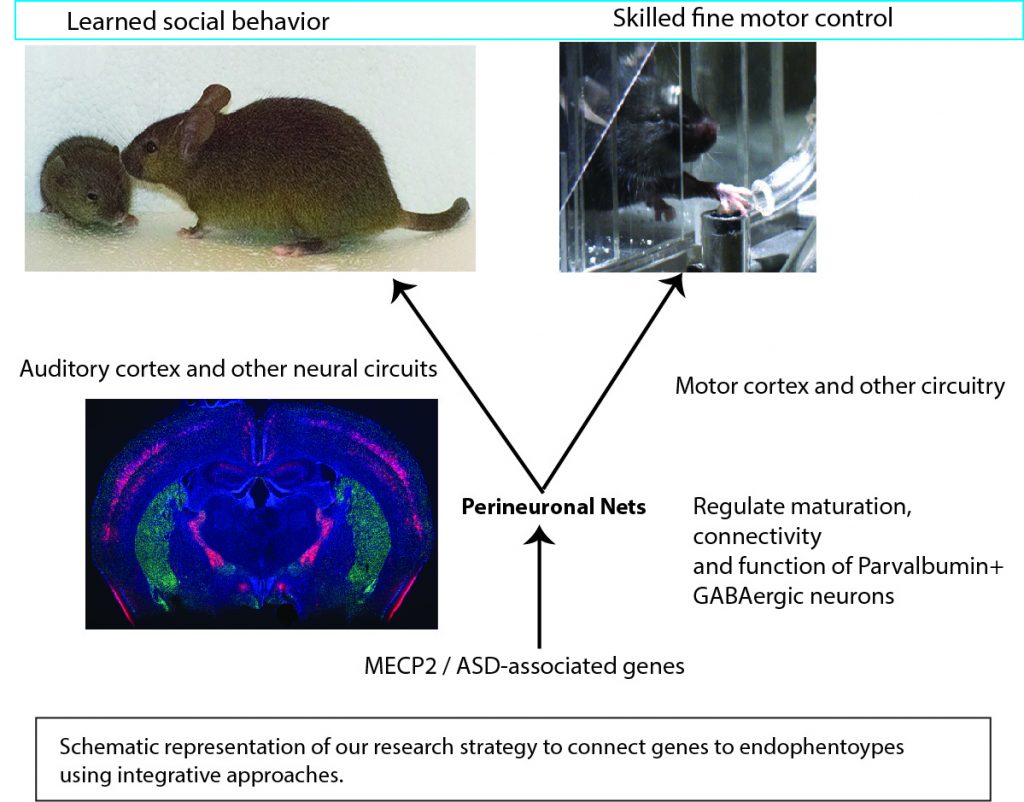Research Focus:
The Krishnan lab is interested in understanding how we learn and interact with the environment using our senses and movement. Plasticity is a specific brain process by which we and other organisms navigate our environment and learn from experiences. We are interested in determining the molecular and cellular mechanisms underlying brain plasticity in development and adulthood, in health and disease. Our strategy for approaching this fundamental biological question is to start with genes, which when mutated affect plasticity, ultimately leading to neurological diseases.
Our current focus is on Rett Syndrome, a complex neurodevelopmental disorder.
- Rett Syndrome is a rare genetic disorder that mainly affects girls and women.
- Girls with Rett Syndrome exhibit loss of acquired purposeful hand skills, stereotypic hand movements such as hand wringing/squeezing, loss of acquired spoken language and sensory processing difficulties.
- It is caused predominantly by mutations in a gene called MECP2 (Methyl CpG-binding Protein 2).
- MECP2 is on the X-chromosome. Thus, due to random X-chromosome inactivation, approximately half of the cells of the body and brain express normal MECP2 protein, while the other half express the mutated/deleted copy.
- Our current research goal is to determine the pathogenesis of Rett Syndrome using integrative concepts and techniques from molecules to behavior.
Hypotheses:
- General Hypothesis: MECP2 regulates the timing of experience-dependent plasticity in a context-dependent and neural circuit-specific manner, during specific episodes of learning and consolidating relevant behaviors throughout life.
- Specific Hypothesis: Wild-type MECP2 expressed in half of the cells of the body and brain also contribute to the dynamic Rett syndrome phenotypes.
Long-term vision:
- Utilizing comparative analysis to determine common molecular and neural motifs of plasticity in the brain.
- Studying longitudinal time scales from early postnatal development, adolescence, adulthood and aging using ethologically relevant mouse behavioral assays
- Comparing different mouse models of Autism Spectrum Disorder, and possibly other animal models
- Exploring treatment and therapeutic strategies for X-linked disorders
